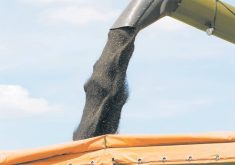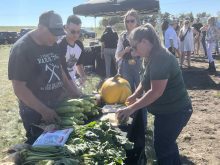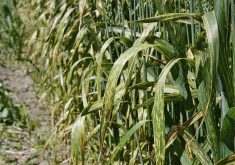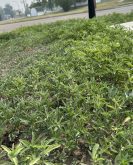Doug Moisey wouldn’t go so far as to say corn is the “wuss” of the cropping world, but it sure doesn’t put up much of a fight against weeds.
“Wuss may be a strong word, but when it comes to weed control, it’s very critical,” said the DuPont Pioneer area agronomist at Farming Smarter’s field school late last month.
“Corn does not like competition from weeds or other plants when it comes out of the ground.”
Weed competition can begin hitting a corn crop’s yield early in the growing season, even before the plant’s stalk is out of the ground — a critical stage when the potential yield is starting to be determined.
Read Also
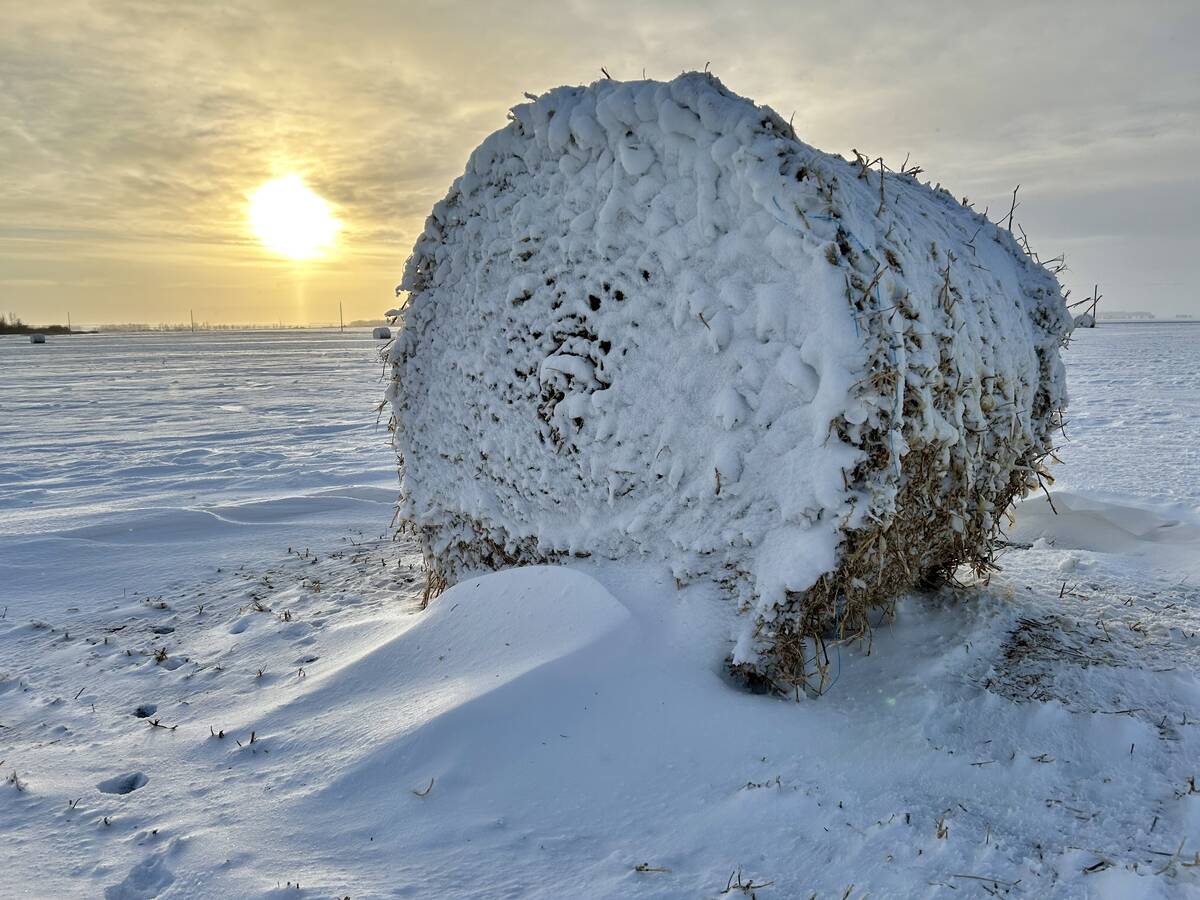
Prairie winter snowfall forecast 2025-2026
How much snow should farmers in Alberta and elsewhere on the Canadian Prairies expect for the rest of December 2025 and into January-February 2026?
“When you look at yield, it’s the number of rows times the number of kernels,” said Moisey. “By V4 or V5, your number of rows (around the cob) has been determined. Rather than having 18 rows, you might only have 14.
“If you’ve got weed pressures going on at V3 or V4, you’re limiting your rows.”
Moisey calls the yield hit an “escalating scale.” Weeds that are six inches tall when the corn is at the V1 or V2 stage will cause around 10 per cent damage to yield. When the weeds get to be 10 inches or taller, the damage is in the 20 per cent range.
“Guys who are looking at spraying at this time of year — spraying this late — they’re cost a lot of yield.”
Corn plants don’t begin competing against weeds until they reach the V8 to V13 stage, “when they’re starting to get leaves getting together and shade out things. That’s when it’s gotten tall enough that it’s competing well against your weed system.”
“We typically want a field from VE — which is emergence — to about V13 that’s relatively clean.”
Spraying a product like Heat pre-emergence will help with that, said Moisey.
“Although it’s 13 or 14 bucks an acre, it will take everything out. It’s not a residual that’s going to harm your corn, but it could leave you weed free up until that V3 stage.”
Roundup offers solid post-emergent control for most weeds in a corn crop, “except one major one — Roundup Ready canola.”
“This is the biggest headache for a lot of guys right now. They don’t know how to control the volunteer canola in their crop.”
- From Grainews: Crop rotations in northeast Saskatchewan
And control measures are limited. Phenoxy herbicides like 2,4-D and MCPA are registered for broadleaf weed control in corn, but they can cause buggy whipping and brittle snap, which causes the plants to tip over and break. They can also deform the brace root system, which is “critical” in southern Alberta’s wind, and “pinch off” the taproot system, preventing nutrient uptake.
“We’re targeting one ear, and we derive most of our energy and most of our weight for silage off of that ear. If you’re limiting this nutrient uptake, you’re not getting starch.”
Group 27 products — such as Amvac’s Impact or BASF’s Armezon — control volunteer canola and other weeds without causing brittle stem or buggy whipping.
“When you’re looking at control for volunteer canola, there is that opportunity,” said Moisey. “What guys are doing is they’re tank mixing Atrazine, Roundup, and Impact together to get rid of their weed problems.”
When using a Group 27 herbicide, producers need to use adequate water volumes and, in some cases, surfactant. In in-field trials conducted last year in northern Alberta, producers saw inadequate volunteer canola control when water volumes were dropped from the recommended 10 gallons to five gallons.
“This is a contact herbicide,” said Moisey. “You have to have the water volumes and the surfactant. That’s what enhances the product.”
Though the products have so far only been registered for wild and volunteer mustard control, with registration for volunteer canola control pending, Moisey sees Group 27 herbicides as a “great opportunity” for Roundup Ready canola control in corn.
“This is a good way to keep your crop clean,” he said. “It’s safe on your crop and it controls volunteers, and that’s what we’re after here.”




